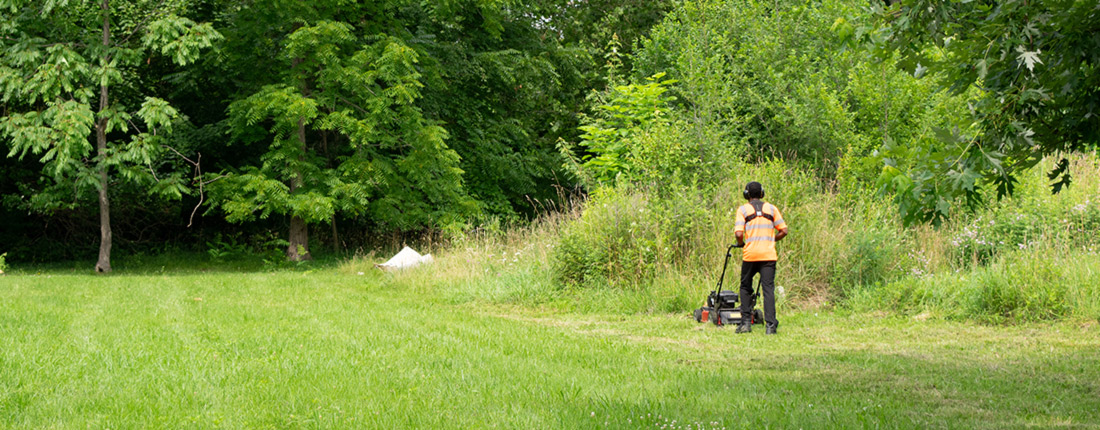Topic(s): Land Banks, Vacant Land Stewardship
New Study Shows Land Bank Ownership of Vacant Lots Can Reduce Violent Crime
December 18, 2023

Land banks across the United States are managing more and more vacant properties—86 percent of which are vacant lots. By maintaining these properties land banks not only help build more vibrant neighborhoods, it turns out they also play a role in violence prevention.
A recent study conducted in Flint, Michigan compared the violent crime density around vacant lots owned by the Genesee County Land Bank Authority (GCLBA) with crime around privately owned vacant lots. The study found land bank ownership was associated with net declines in both the density of all crime and serious violent crimes over time.
How does the land bank take care of vacant properties in Flint?
The GCLBA primarily manages its vacant properties in two ways:
- Biannual Mowing: The land bank retains professional work crews to mow all unmaintained vacant properties—regardless of whether a property is GCLBA-owned—approximately twice a year.
- Community-Engaged Stewardship: Due to widespread vacant properties in Flint, there are more properties in GCLBA’s inventory than what their crews can maintain. To bridge this gap, the land bank works with volunteers to help consistently maintain vacant properties across the city through its Clean and Green program. Community-led greening activities typically include mowing, picking up trash, and sometimes community gardening or other volunteer-led activities.
What is the relationship between land bank ownership of a property and crime?
The study found GCLBA involvement reduced crime on vacant properties in the following ways:
- Densities of all crime types decreased more at GCLBA-owned properties than at comparison properties.
- Youth-involved firearm violence and violent crime decreased more at GCLBA-owned properties than at comparison properties.
- More intensive forms of GCLBA stewardship (i.e., more than biannual mowing) are associated with greater net reductions in the incident densities of these forms of crime.
- Community-engaged GCLBA stewardship was the only stewardship condition associated with reduced firearm violence over time.
In other words: GCLBA-sponsored community-engaged stewardship of vacant properties was associated with reductions in violent crime in general, and firearm crime in particular, over time—including for youth-involved crime. And all GCLBA-owned—not just properties with more intensive stewardship activities—experienced greater reductions in crime and violence over time than vacant properties not owned by the land bank.
What can other communities and land banks learn?
- Land banks can play a role in deterring crime and violence by helping communities experiencing disinvestment maintain vacant, abandoned, and deteriorated properties.
- Policies enabling land banks to develop programs that engage residents in vacant property maintenance may help prevent interpersonal violence, including firearm violence.
- Adequate funding for vacant property maintenance in communities grappling with systemic vacancy could impact overall community safety and may reduce violent crime.
About the study: GCLBA has partnered with the University of Michigan Youth Violence Prevention Center for several years to research the effects of its programming on crime and violence in Flint, Michigan. Center for Community Progress is also a partner in this research. To learn more about all the research conducted, visit https://yvpc.sph.umich.edu/.
Subscribe to join 14,000 community development leaders getting the latest resources from top experts on vacant property revitalization.
